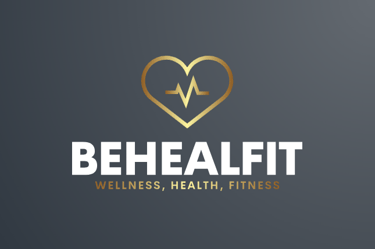8 Foods You Thought Were High in Protein (But Aren't) - A Complete Guide
Discover 8 foods often thought of as high in protein, but which are not. Avoid these traps and optimize your diet to reach your goals!
HEALTHBLOG-LIST
12/4/20243 min read


Looking to increase your protein intake to support your fitness goals or simply adopt a balanced diet? Beware of misconceptions! Did you know that some popular foods, like almonds and spinach, aren't as protein-rich as you might think? This article reveals 8 "trap" foods and explains why they may not meet your nutritional needs.
In short: The false friends of protein
Almonds
Potatoes
Spinach
Mushrooms
Whole wheat bread
Chickpeas
Almond milk
Vegetable juices
1. Almonds: A misleading nutritional profile
What we think: Almonds are often touted as an ideal source of protein for snacks.
The reality: They contain about 6g of protein per 100g, but they are mostly rich in (healthy) fats. Their protein intake is therefore relatively low compared to their caloric density.
Alternatives: For a high-protein snack, choose cashews (18g/100g) or sunflower seeds (21g/100g).
2. Potatoes: Not as protein-packed as you think
What we think: They are sometimes associated with a source of vegetable protein, especially when eaten with the skin on.
The reality: They contain about 2g of protein per 100g. Their main role in the diet remains the supply of carbohydrates, not protein.
Alternatives: For a higher protein intake, opt for legumes such as lentils (26g/100g) or kidney beans (22g/100g).
3. Spinach: Far from being a protein champion
What we think: Spinach has long been considered a superfood, thanks in part to Popeye!
The reality: With about 2.9g of protein per 100g, it lags far behind true protein sources like meats or legumes.
Alternatives: For a similar intake of iron and vitamins, but with more protein, choose kale (4.3g/100g) or broccoli (2.8g/100g) which also offer fiber.
4. Mushrooms: Light, but not protein-rich
What we think: Mushrooms are seen as a protein alternative for vegetarians.
The reality: They contain only 3.1g of protein per 100g. Their value lies rather in their low calorie intake and fiber content.
Alternatives: Tofu (8g/100g) and tempeh (19g/100g), derived from soybeans, are excellent sources of vegetable protein.
5. Whole wheat bread: A common trap
What we think: Whole wheat bread is often presented as being rich in protein and fiber.
The reality: While it contains more nutrients than white bread, it provides only 9g of protein per 100g. It is therefore not a sufficient source on its own.
Alternatives: Sourdough bread (11g/100g) and multi-grain bread (12g/100g) are better options.
6. Chickpeas: Good, but not unbeatable
What we think: Chickpeas are regularly cited as an excellent source of vegetable protein.
The reality: They provide about 7.2g of protein per 100g cooked. However, their main contribution is energy thanks to carbohydrates.
Alternatives: Red lentils (26g/100g) or black beans (21g/100g) are higher in protein.
7. Almond milk: A popular illusion
What we think: A popular substitute for cow's milk, it is often attributed with protein-rich properties.
The reality: Most almond milks contain less than 1g of protein per glass. A huge difference from cow's milk which provides about 3.4g per glass.
Alternatives: Soy milk (3g/100ml) or pea milk (3.3g/100ml) are plant-based alternatives that are richer in protein.
8. Vegetable juices: Full of vitamins, but not protein
What we think: They are often seen as complete nutritional cocktails.
The reality: The protein content of vegetable juices is negligible. Their interest lies in the vitamins and minerals they provide.
Alternatives: For a protein intake, add a scoop of vegetable protein powder to your vegetable juice, or consume it with a handful of almonds or nuts.
FAQ: Your questions about protein
1. Why is protein so important?
It is essential for building muscle, repairing tissue, producing hormones and enzymes, and the overall functioning of the body. Adequate protein intake also contributes to the feeling of satiety, which can help with weight management.
2. What are the best sources of protein?
Animal: lean meats, fish, eggs, dairy products.
Vegetable: legumes (lentils, beans, chickpeas), tofu, tempeh, quinoa, seeds (chia, hemp, squash).
3. How much protein should I eat per day?
Protein needs vary by age, gender, physical activity, and health status. In general, it is recommended to consume about 0.8g of protein per kg of body weight per day.
4. Are the foods listed here useless?
Not at all! They offer other important nutritional benefits (vitamins, minerals, fiber, antioxidants), but should not be considered as main sources of protein. It is essential to adopt a varied and balanced diet to meet all your needs.
Conclusion: Make the right choices for your protein
Now that you know these 8 "false friends", you can adjust your food choices to better meet your protein needs. Opt for reliable and balanced sources, favoring variety, to achieve your nutritional and health goals.
Share this article to educate your friends and family about common food traps!
